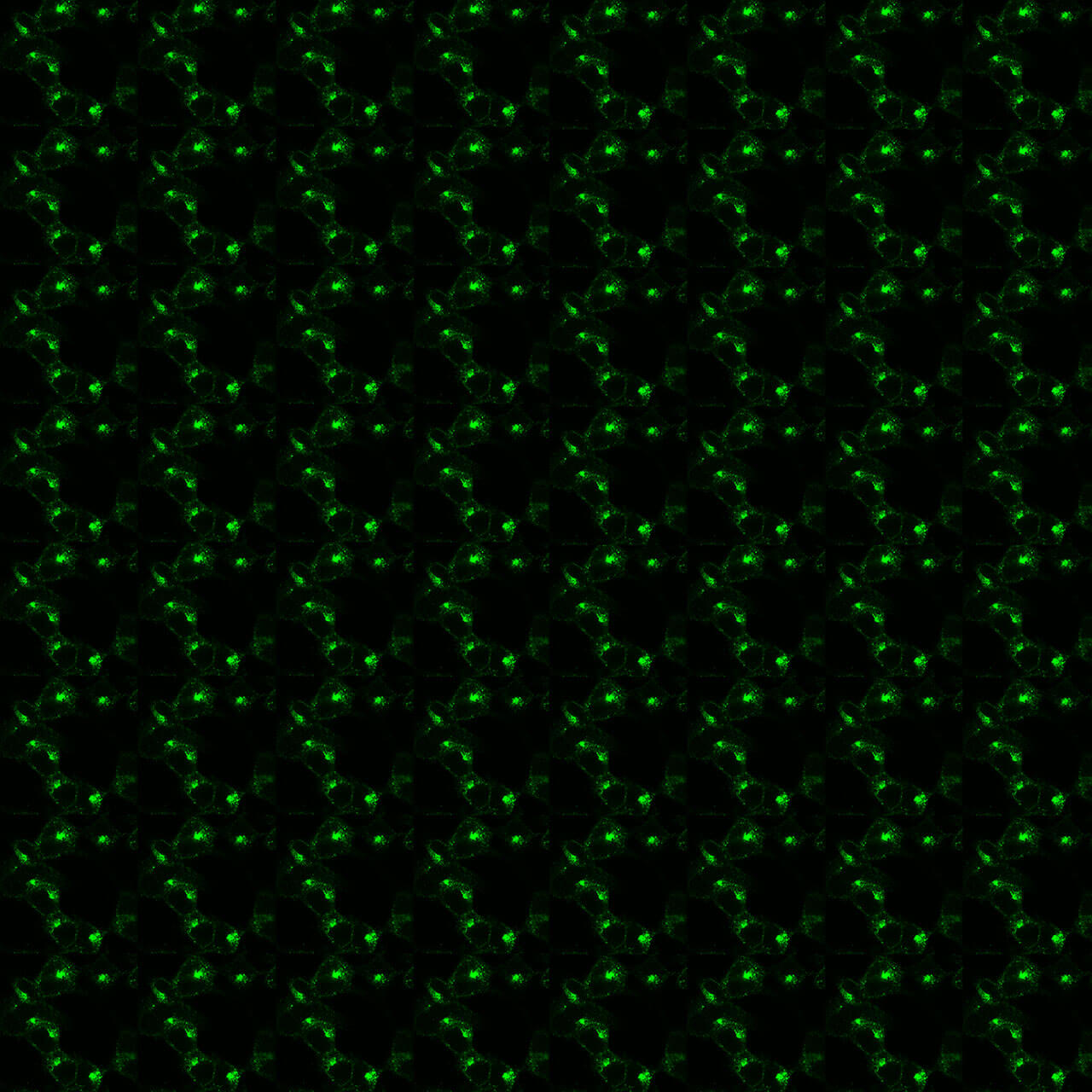No results were found for the filter!
Citations
 N/OFQ (IHC-grade), Nociceptin/Orphanin FQ Antibody
N/OFQ (IHC-grade), Nociceptin/Orphanin FQ Antibody The N/OFQ receptor antibody is directed against human Nociceptin/Orphanin FQ. The N/OFQ antibody can be used to detect N/OFQ in formalin-fixed, paraffin-embedded tissue sections by immunohistochemistry.
$ 350.00 *
Citations
 NPS (IHC-grade), Neuropeptide S Antibody
NPS (IHC-grade), Neuropeptide S Antibody The NPS antibody is directed against human Neuropeptide S. The NPS antibody can be used to detect Neuropeptide S in formalin-fixed, paraffin-embedded tissue sections by immunohistochemistry.
$ 350.00 *
Citations
 NPB (IHC-grade), Neuropeptide B Antibody
NPB (IHC-grade), Neuropeptide B Antibody The NPB antibody is directed against human Neuropeptide B. The NPB antibody can be used to detect Neuropeptide B in formalin-fixed, paraffin-embedded tissue sections by immunohistochemistry.
$ 350.00 *
NEW
 FLAG-Tag, Anti-FLAG Epitope Tag Antibody
FLAG-Tag, Anti-FLAG Epitope Tag Antibody The anti-FLAG tag antibody is directed against the sequence DYKDDDDK. The anti-FLAG antibody can be used to detect total receptors in Western blots independent of phosphorylation. The anti-FLAG tag antibody can also be used to isolate...
$ 250.00 *
NEW
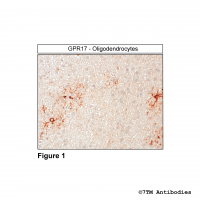 GPR17 (IHC-grade), G Protein-Coupled Receptor...
GPR17 (IHC-grade), G Protein-Coupled Receptor... The GPR17 antibody is directed against the distal end of the carboxyl-terminal tail of mouse, rat and human GRP17. It can be used to detect total GPR17 receptors in Western blots independent of phosphorylation. The GPR17 antibody can...
$ 375.00 *
NEW
 D2 (IHC-grade), Dopamine Receptor 2 Antibody
D2 (IHC-grade), Dopamine Receptor 2 Antibody The D2 receptor antibody is directed against the third intracellular loop of mouse, rat and human D2 dopamine receptor. It detects both the long and short form of D2. It can be used to detect total D2 receptors in Western blots...
$ 375.00 *
NEW
KO-Validated
 mGPR20 (IHC-grade), G Protein-Coupled Receptor...
mGPR20 (IHC-grade), G Protein-Coupled Receptor... The GPR20 receptor antibody is directed against the distal end of the carboxyl-terminal tail of mouse GPR20. It can be used to detect total GPR20 receptors in Western blots independent of phosphorylation. The GPR20 antibody can also be...
$ 375.00 *
NEW
KO-Validated
 mC5a1 (IHC-grade), Complement C5a Receptor 1...
mC5a1 (IHC-grade), Complement C5a Receptor 1... The mouse C5a1 receptor antibody is directed against the distal end of the carboxyl-terminal tail of mouse and rat C5a1. It can be used to detect total C5a1 receptors in Western blots independent of phosphorylation. The mouse C5a1...
$ 375.00 *
NEW
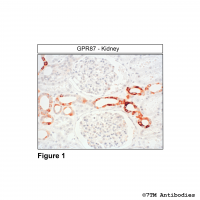 GPR87 (IHC-grade), G Protein-Coupled Receptor...
GPR87 (IHC-grade), G Protein-Coupled Receptor... The GPR87 antibody is directed against the distal end of the carboxyl-terminal tail of mouse, rat and human GRP87. It can be used to detect total GPR87 receptors in Western blots independent of phosphorylation. The GPR87 antibody can...
$ 375.00 *
Citations
NEW
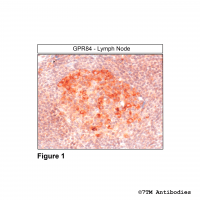 GPR84 (IHC-grade), G Protein-Coupled Receptor...
GPR84 (IHC-grade), G Protein-Coupled Receptor... The GPR84 antibody is directed against the distal end of the carboxyl-terminal tail of human GRP84. It can be used to detect total GPR84 receptors in Western blots independent of phosphorylation. The GPR84 antibody can also be used to...
$ 375.00 *
Citations
NEW
 C5a1 (IHC-grade), Complement C5a Receptor 1...
C5a1 (IHC-grade), Complement C5a Receptor 1... The C5a1 receptor antibody is directed against the distal end of the carboxyl-terminal tail of human Complement 5a Receptor 1. It can be used to detect total C5a1 receptors in Western blots independent of phosphorylation. The C5a1...
$ 375.00 *
NEW
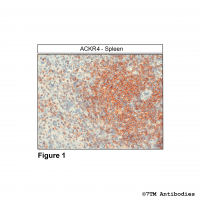 ACKR4 (IHC-grade), Atypical Chemokine Receptor...
ACKR4 (IHC-grade), Atypical Chemokine Receptor... The ACKR4 receptor antibody is directed against the distal end of the carboxyl-terminal tail of human Atypical Chemokine Receptor 4. It can be used to detect total ACKR4 receptors in Western blots independent of phosphorylation. The...
$ 375.00 *
Citations
 HA-Tag, Anti-HA Epitope Tag Antibody
HA-Tag, Anti-HA Epitope Tag Antibody The anti-HA tag antibody is directed against amino acids 98-106 of the human influenza hemagglutinin (HA). The HA tag can used as a general epitope tag in expression vectors. The anti-HA antibody can be used to detect total receptors in...
$ 250.00 *
Citations
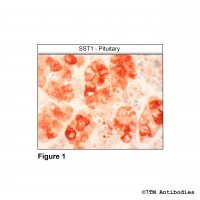 SST1 (IHC-grade), Somatostatin Receptor 1 Antibody
SST1 (IHC-grade), Somatostatin Receptor 1 Antibody The SST1 receptor antibody is directed against the distal end of the carboxyl-terminal tail of human Somatostatin Receptor 1. It can be used to detect total SST1 receptors in Western blots independent of phosphorylation. The SST1...
$ 375.00 *
Citations
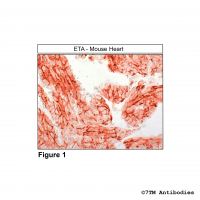 ETA (IHC-grade), Endothelin Receptor A Antibody
ETA (IHC-grade), Endothelin Receptor A Antibody The ETA receptor antibody is directed against the distal end of the carboxyl-terminal tail of mouse, rat and human endothelin receptor A. It can be used to detect ETA receptors in Western blots in a phosphorylation-sensitive manner...
$ 375.00 *
Citations
 NK1 (IHC-grade), Tachykinin Receptor 1 Receptor...
NK1 (IHC-grade), Tachykinin Receptor 1 Receptor... The NK1 antibody is directed against the distal end of the carboxyl-terminal tail of human Tachykinin Receptor 1 (also called Substance P Receptor). It detects selectively the canonical full-length NK1 Tachykinin Receptor. It can be used...
$ 375.00 *
Recently viewed

